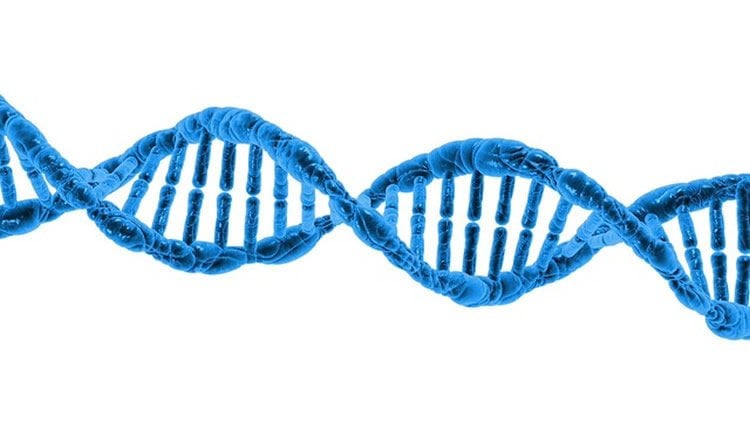UM College of Arts & Sciences psychology researchers find that dopamine genes could shine a light on early communication.
University of Miami College of Arts & Sciences psychology researchers are searching for early markers of autism spectrum disorder (ASD). Previously, UM researchers published a study predicting ASD symptoms from children’s behavior in the first year of life. Infants who demonstrated less initiating joint attention, using eye contact to share an experience with another person, tended to have higher levels of autism symptoms at age three.
Recently, UM researchers published another study in the journal Autism Research examining associations between specific dopamine genes and initiating joint attention in high-risk siblings, children who have an older brother or sister with autism spectrum disorder.
Devon Gangi, who received her Ph.D. working with UM College of Arts & Sciences Psychology Professor Dr. Daniel Messinger, is a co-author of the study and now a postdoctoral fellow at the MIND Institute at the University of California, Davis. She explains, “Joint attention is especially relevant for the development of children with autism and high-risk siblings.”
The researchers studied two groups of children – high-risk and low-risk – from infancy until they turned three years old. Joint attention behavior was observed during interactions with an examiner in the first year of life, and genotypes were collected for two dopamine genes, DRD4 and DRD2. Gangi explains, “Early levels of initiating joint attention have been linked to later levels of ASD symptoms in high-risk siblings. So we examined whether these dopamine genes might help explain differences in early levels of initiating joint attention.”
Researchers studied these particular genes because they are linked to attention. “We are interested in dopamine because we know it is associated with attention in all kids, and attention is especially important for kids with autism. Attention to others is about connecting with another person, and that can be difficult for kids with autism spectrum disorder,” said Dr. Messinger.
The findings show that in high-risk siblings, children with more genotypes linked to less efficient functioning of the dopamine system displayed lower levels of initiating joint attention.

“Finding links between genotypes and behaviors that are especially important for the development of children at risk for autism, such as initiating joint attention, may help us to understand identify high-risk children who are at the greatest risk for difficulties in particular behavioral domains even before they show delays or difficulties,” said Gangi.
The study is entitled, “Dopaminergic Variants in Siblings at High Risk for Autism: Associations with Initiating Joint Attention.”
Source: Deserae Del Campo – University of Miami
Image Source: The image in the public domain.
Original Research: Abstract for “Dopaminergic variants in siblings at high risk for autism: Associations with initiating joint attention” by Devon N. Gangi, Daniel S. Messinger, Eden R. Martin and Michael L. Cuccaro in Autism Research. Published online March 15 2016 doi:10.1002/aur.1623
Abstract
Dopaminergic variants in siblings at high risk for autism: Associations with initiating joint attention
Younger siblings of children with autism spectrum disorder (ASD; high-risk siblings) exhibit lower levels of initiating joint attention (IJA; sharing an object or experience with a social partner through gaze and/or gesture) than low-risk siblings of children without ASD. However, high-risk siblings also exhibit substantial variability in this domain. The neurotransmitter dopamine is linked to brain areas associated with reward, motivation, and attention, and common dopaminergic variants have been associated with attention difficulties. We examined whether these common dopaminergic variants, DRD4 and DRD2, explain variability in IJA in high-risk (n = 55) and low-risk (n = 38) siblings. IJA was assessed in the first year during a semi-structured interaction with an examiner. DRD4 and DRD2 genotypes were coded according to associated dopaminergic functioning to create a gene score, with higher scores indicating more genotypes associated with less efficient dopaminergic functioning. Higher dopamine gene scores (indicative of less efficient dopaminergic functioning) were associated with lower levels of IJA in the first year for high-risk siblings, while the opposite pattern emerged in low-risk siblings. Findings suggest differential susceptibility—IJA was differentially associated with dopaminergic functioning depending on familial ASD risk. Understanding genes linked to ASD-relevant behaviors in high-risk siblings will aid in early identification of children at greatest risk for difficulties in these behavioral domains, facilitating targeted prevention and intervention.
“Dopaminergic variants in siblings at high risk for autism: Associations with initiating joint attention” by Devon N. Gangi, Daniel S. Messinger, Eden R. Martin and Michael L. Cuccaro in Autism Research. Published online March 15 2016 doi:10.1002/aur.1623






